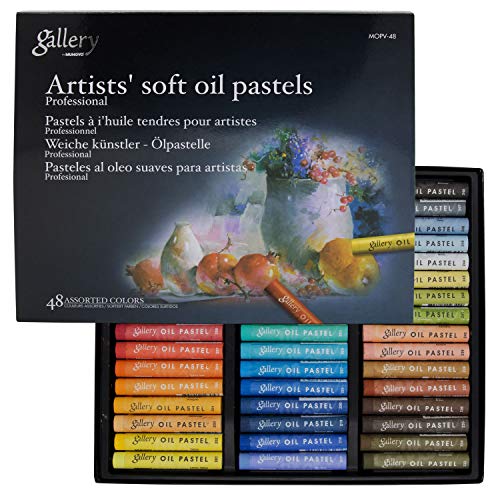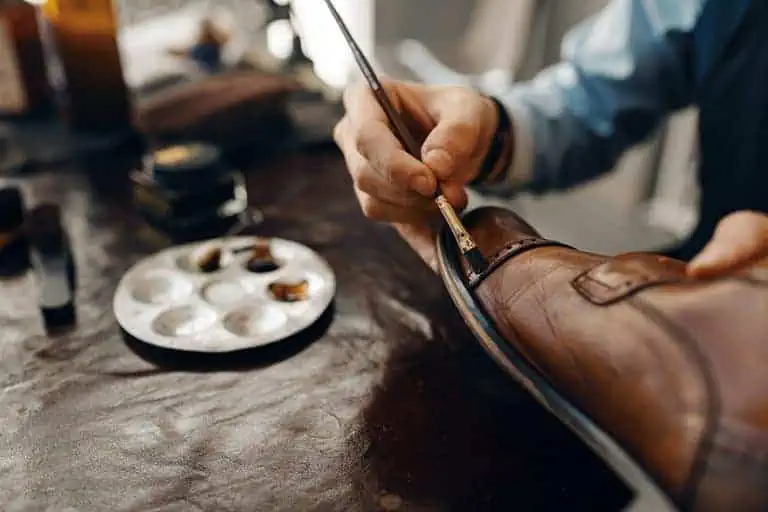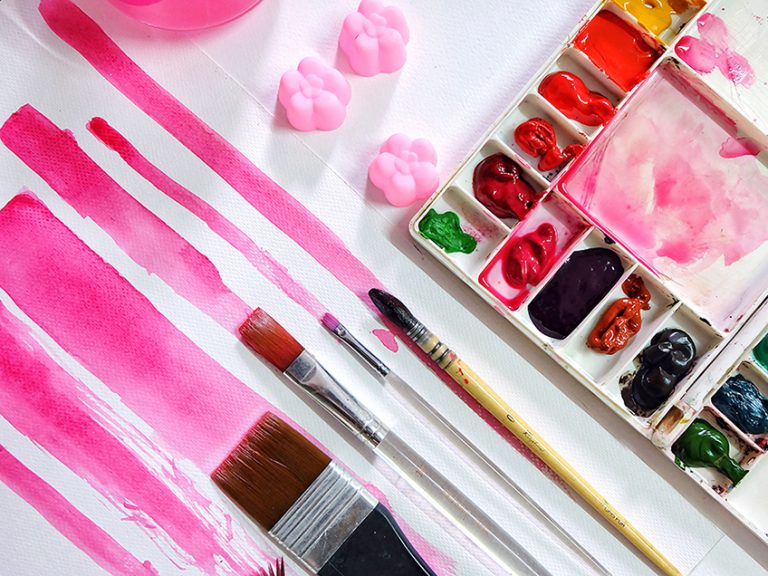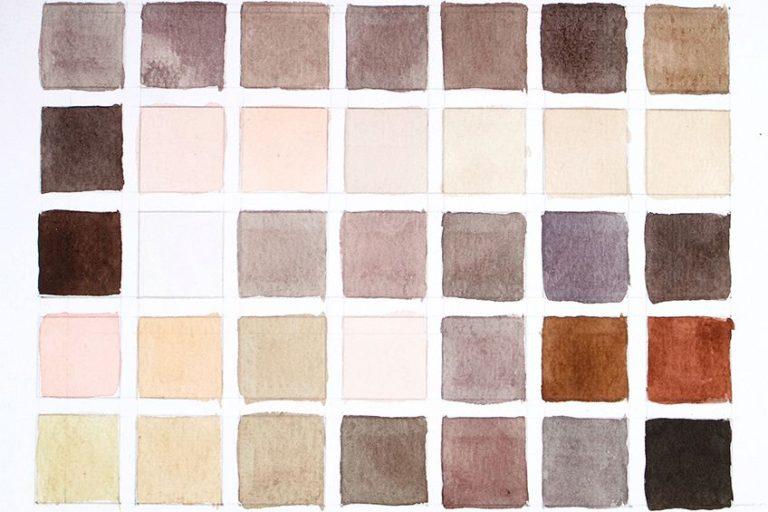Best Oil Pastels – Full Guide about Oil Crayons
This post may contain affiliate links. We may earn a small commission from purchases made through them, at no additional cost to you.
Despite what popular Instagram accounts may lead you to believe… Pastel is not a color scheme or an aesthetic cover picture on Facebook. Pastel is an art medium, a material used by artists for hundreds of years (since about the 16th century to be exact). Pastel art medium comes in many different textures, consistencies, and shades of color, they are malleable to your style of art. Whether you are a budding art student in grade school or taking a fine arts class for a semester at college, working with pastel is a skill worth learning. No technique is incorrect – art is art, is it not? Yet, we have laid down some guidelines on how to understand the medium and what to look for in the best oil pastel brands before you begin your project.
Table of Contents
Starting Out with Oil Pastels
Pastel as an art medium has been worked with by artists for quite some time, as mentioned above. The invention of oil crayons, or pastels, was truly a mark in history worth noting. In 1925 Sakura Cray-Pas designed a non-toxic variation to wax and pencil crayons. The ideal way to eliminate dust caused by the colored pencils, not to mention the safety benefits for children who usually used wax crayons, being non-toxic and all.
Color pigment, oil, and wax were combined and packed into rectangular sticks, the size of your index finger. In modern days we still favor the same recipe, with linseed oil being the preferred choice. Ultimately, pastel sticks made from wax crayons might be a great option for children to discover their passion for art. But, the oil is truly what makes such a difference for the medium. But, to truly understand their greatness, one must first learn of all the variations of pastel, in all its forms.

Soft Pastels
Soft pastels are rich in color. The intensity is quite dazzling, perfect for a bold expressionist piece. The texture of soft pastels vs oil pastels is that of a powdery or flakey effect. They are made with white chalk, color pigments, and Arabic gum, which binds all the ingredients together to make a soft pastel stick. What sets them apart, is that there is less binder, or Arabic gum, and more color pigment, and this, along with the white chalk, is what gives them their brilliance.
PROS
- Easily accessible
- Easy to fuze colors together
- Bright, lively hues
- Versatile for all age groups
CONS
- Protection spray need when your artwork is completed
- Cannot be left uncovered, ideally it should be framed
- High heat can cause it to melt
- Leaves you with dirty fingers
- Leaves behind crumbles

Hard Pastels
Where there is a positive there is a negative. And in this case, where there are soft pastels, there are most definitely hard ones too. Hard and soft pastels could not be more different. Where soft pastels have more pigment than the binder, hard pastels have more binder than pigment. Hard pastels are perfect for creating fine detail and strong lines because they are made with a natural point. This is because the soft pastel is too mushy to create the desired lines. Ultimately, a good oil pastel artist knows they need a variation of hard and soft pastels.
PROS
- Easy to transport
- Not as delicate as soft pastels
- Perfect for fine detail, sketching the initial outlines
- Ideal for the backdrop of your artwork
- Cleaner fingers
CONS
- Only good for fine detail, no blending
- Limited in choice of colors
- Less vibrant colors
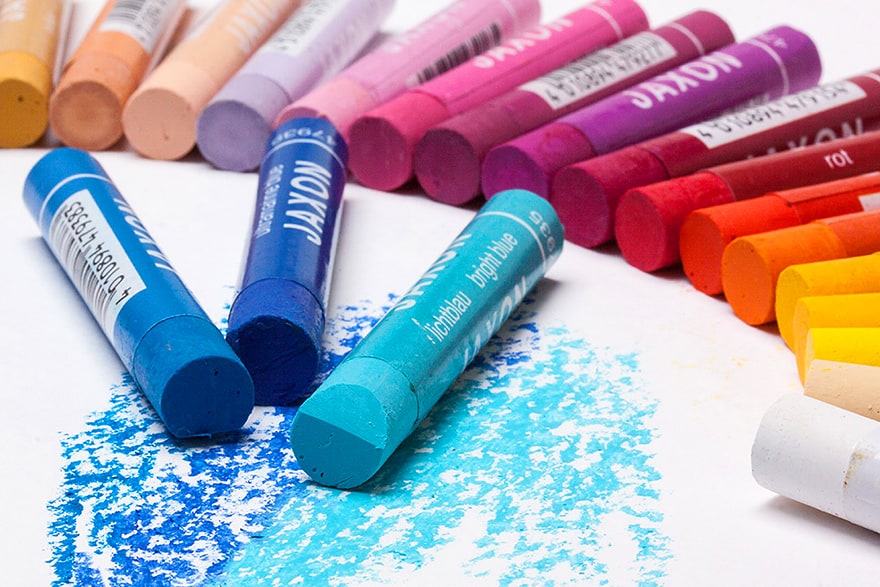
Pastel Crayons
If you are a newbie to the art world or if you are an oil pastel artist extraordinaire, pastel crayons are perfect for anyone. If you are lucky enough to go on holiday, these oil pastel crayons are the perfect hobby to bring along to keep you creatively busy. They offer the same vibrant and versatile color options to choose from. Not only that, but pastel pencils will not break as easily and keep your hands from getting all covered in them. This keeps your workspace clear of any finger smudges.
One must bear in mind the risks involved with all this convenience. Pastel crayons could leave behind a dusty residue which can be harmful to one’s health if breathed in. This is because certain pastel mediums have harmful pigments which are toxic. Ideally, you should be scanning the aisles for non-toxic or eco-friendly pastel crayons. Not only is this a great option for your kid’s safety, but it is also not so bad for the planet either!
PROS
- Great for first-timers
- Beautiful hues
- Useful with striking lines and small details
- Easy to hold in your hands
- Less dirt
CONS
- Dangerous if you breathe it in
- Expensive
- Large pieces may take a while
- Limited to smaller artworks

Oil Pastels
The end product has a more luminous and silky effect ultimately because of the linseed oil base. The creamy texture of the oil pastels makes blending an easy task That’s not all! Oil pastel artists have worked out that using oil pastels on a canvas would eventually dry up permanently, as long as the canvas is not too smooth. It also works on material. After creating your artwork, you must cover it with another piece of material and press down on it with a hot iron. Basically, the same principle as if you are ironing on a badge.
Oil pastels are great to be used on many different kinds of surfaces, as long as there is enough grip. Many artists prefer to use fine sandpaper-like materials so that the roughness can hold the pastel’s oiliness easily. When completed, do not store your artwork frivolously. Ideally, it should be kept covered like in a frame with glass or in an art journal with tissue paper in between the pages of your finished artwork it is best to keep it covered because it smudges easily. Ideally, it should be framed with a space between the artwork and the glass to prevent messing it up.
PROS
- Fixing, or protective spray not necessary
- Can be applied to various surfaces with different
- Applied to many different kinds of surfaces
- Bright, vibrant colors
CONS
- More sticky to apply
- Harder to blend doors together
- Pricey
- Makes for a heavy artwork because of the oil
The Best Type of Pastel for You
In terms of soft pastels vs oil pastels, it is easy enough to see, from the explanations above, that neither soft pastels nor oil will give you a wider variety of color choices than the other. The richness of the colors is similar, although the oil pastels do give a more renaissance effect with their more luminous finish.
Soft pastels can cause harm to your health from the dust they emit when used. Oil pastels will not break apart in your fingers. Not only that but the final product looks more professional and no need for a finishing spray. Artists understand each type of pastel has different effects for different styles of artworks. It’s up to their artistically educated minds to choose the right one.
When you are sketching the outlines or the foundation of your artwork it is best to use pencil pastels as they have a finer point, but hard pastels can be used all the same. One can then fill up the background with soft pastels. If you are trying to draw the detail of something small and distinct, then hard pastels are the ones for you.
Which Oil Pastel Brands Are the Best?
To determine which type of pastel would be the best option for you, you must first work out the style in which you wish to create your art piece. Not only that, but you must also consider how advanced you are in working with pastels as a medium. Be they hard, soft, or oil pastels, there is something for every style.
There are many brands to choose from and the cost will differ between them. Your best bet is to go according to your wallet. Choose the best quality pastel brands which you can budget for. After all – it is not the brand that counts, but what you do with it. Not to fret, we have listed some of the best oil pastel brands for beginners and kids, which you can buy online.

For Newbies: MUNGYO GALLERY Soft Oil Pastels
New, budding artists to those who have experienced many seasons, Many have fawned over Mungyo Gallery’s oil pastel design. It is because of its smooth consistency and texture when used. These are perfect as they do not leave residue on your fingers nor do they smudge as badly as other brands of the same type of pastel. The brilliance of the colors is eye-catching, to say the least, thanks to its high pigment density.
- Soft, good to smudge and layers, the colors are strong and opaque.
- Hardly any pressure needed to paint with the oil pastels and still hard enough that they don't melt between your fingers.
Among many other options to choose from Mungyo Gallery’s art supplies, they have one set which comes with 48 shades. Like oil paintings, you can also thin out the pastel with more oil so you can appreciate a smoother finished piece. Mungyo Gallery’s oil pastels for beginners (or not) are non-toxic and child-friendly. They are far less inclined to flake apart, which makes fine lines more achievable. Blending and impasto techniques are great to show off when using these oil pastels. Your choice of the surface on which to create the art is not limited to paper. You can apply it to canvas, paper, or sometimes fine sandpaper. Oil pastel artists have even gone so far as to make reviews on Youtube to recommend this medium.
PROS
- A large number of colors to choose from
- Not a hassle to use
- Does not flake apart
- Affordable
- Silky, creamy consistency
- Non-toxic
- No fixing spray required
CONS
- Needs to be framed
- Heat may cause it to melt
Child-friendly: FABER-CASTELL Blendable Oil Pastels inside a Storage Case
Thinking back to our time in grade school, we all had those moments of deep envy when our friend had Faber Castell pencil crayons, and our pleb crayons barely shone a shade at all. Faber-Castell has been one of the most recognizable and recommended brands by name and quality. Their Blendable Oil Pastels ate the perfect oil pastels for kids, or even just for those fresh newbies, trying out a new technique. What’s quite unique about these oil pastels is that they have been designed into a hexagon shape. This provides for easier handling for tiny fingers.
- 24 piece oil pastels in a clear plastic protective storage case
- Smooth rich colors for easy blending, premium quality and non-toxic
- An ideal set for creative young artists – ages 5+
These durable oil pastels by Faber-Castell, are not as hard as regular lead crayons so your kids can enjoy filling up their whole page, easily, before they lose attention and move onto the next thing (we all know they are notorious for that). This way they can let their minds and imaginations explore the deep realms of the art world. The ultimate plus, that has mothers feverishly reading every label in the stationary aisle, is that they are non-toxic, and, you better believe it, washable from your little one’s clothes.
PROS
- Goes a long way for the cost
- Comes in the shape of a hexagon
- Transportable case
- Child-friendly
- Easy to blend
- Equipped with tools
CONS
- Professional grade is smoother
- Limited color options

Best Value Oil Pastels: PAUL RUBENS Oil Pastel Set
This is an all-rounded brand that is beneficial for all kinds of artists. From age to experience, Paul Rubens oil pastels have the answer for you. As we use white to add more brightness to a hue, this pack comes with extra sticks of white pastel, as well as, three extenders. There are 36 shades of purple and blue. This product is amazing because it can be blended by layering the colors, just like an oil painting. They are versatile in their artwork type, whether it be a self-portrait sketch or a landscape painting. Worrying about your artwork fading should be a thing of the past if you use Paul Rubens oil pastels because the formula is specially made so that it will not do as such. It is able to grip onto the surface you are working on so that it does not flake off, smudge, or fade in the weather.
PROS
- Can be layered to create texture
- Better traction to the paper
- Eco-friendly
- No fixer needed to prevent fading
- Not too different from using oil paints
- Bright colors
CONS
- Limited colors
How to Use Oil Pastels
Each form of art medium is unique in itself. Oil pastels, however, are noticeably different in their texture. The feeling in your fingers is different, it is, after all, a hands-on kind of medium. No matter your hand’s shape and size, there are pastel sticks and even shapes to fit your perfect mold.
Applying pressure is the key to the oil pastel technique. More so, than expected. But you will notice quite soon the different effects of your various strokes. Blending your colors is another thing entirely. Get involved with your art, use your senses to guide you. Do not rush yourself, any skill worth learning will take time, and working with oil pastels is the perfect example. If you are beginning to work with oil pastels, here are some tips we hope will be of help.
- Set up your workspace. If you have a cluttered workspace it can be hard to declutter your mind. Get out your art smock and make sure you have something on the floor or table you are working on to protect the area. Remember, oil pastels can get messy!
- Do not add too many layers and colors on top of each other, it can look untidy or goopy. This is because of the thick consistency that oil pastels are made of
- Some oil pastel kits come with a set of tools that are better for removing or fixing any mistakes.You do this by scraping it off and reapplying the oil pastel over that.
- Certain textures make some people uncomfortable. If you were one of those children who really did not enjoy the goopy art form of finger paints, then pastel is probably not for you. One great option for avoiding the feeling of the oil pastel on your skin is by using a tissue to blend the colors together. Wearing gloves might also help, or even a cotton bud!
- Good coverage comes from reputable brands. As mentioned above, certain sets come with a tool kit for removing mistakes. But there’s nothing stopping you from using a normal painting knife if you have one handy.
- Keep them in a cool place. As we have mentioned before, oil pastels tend to melt in high heat conditions so it can be difficult to use when the pastel sticks are hot.
- Use oil and soft pastels for blending. These pastel options are easier to fill up larger spaces and to blend colors together.
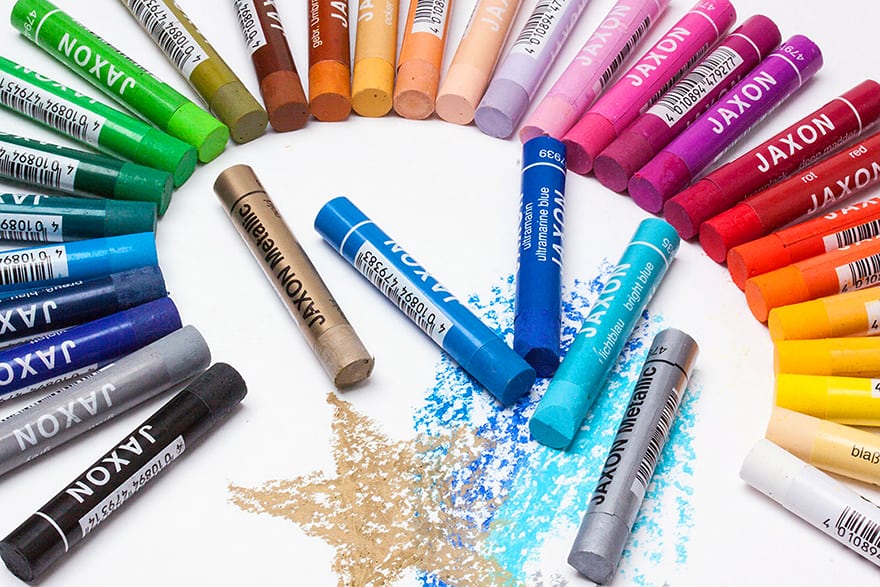
Oil Pastel Techniques
Like everything we humans like to do in this life, we each have our own way of doing it. This was the creation of various techniques and the best way to progress is by learning from each other. It takes time to learn any skill, so do not rush yourself and doubt your skill too early on.
Stippling
Hard pastels can be used for this technique but it is usually done with a pen. Make sure to make a point on the oil pastel you are using if it has been blunted by use. Use staccato strokes, fast and vigorous, to create the texture you desire.
Heavy Pressure Blending
This technique requires strokes in one direction only. Apply the layers of colors together with pressure in order to make a thick, colorful appeal. You can use black and white to make shades of grey for a good way to practice.
Light Pressure Blending
Instead of applying extra pressure, this is a technique that needs soft hands. It calls for lightly adding the layers in order to help blend them.
Sgraffito
Using a tool in the form of a nail or a coin, you can scrape shapes and patterns into thick layers of oil pastel that have been previously overlapped. As each layer is scraped off, each different color is revealed.
Scumbling
In a controlled manner, scumbling calls requires you to make small scribbles in order to blend your colors. It is similar to stippling in this way, as it also calls for the continuous addition of colors until it is how you like it.
Oil
As we have mentioned above, you can thin out the consistency of oil pastel by adding more oil. A great way to do this is by dipping a piece of cotton which has been dipped in linseed oil, the oil to the oil pastel. Be careful with using this method as it takes a while to dry.
What are you waiting for? You now have all the know-how to start your oil pastel artistic journey.

Frequently Asked Questions
Which is The best Pastel Medium to Use?
Pastels tend to be messier. They smudge easily and are a softer more creamy consistency than that of the harder, dry, waxy crayons. Crayons are also wax-based but pastels also have oil in the mix.
What is Oil Pastel Best Suited For?
Oil pastels are great for artists on-the-go. They are really easy to use quickly and efficiently, not to mention they are quicker to dry than oil paints. Paper, canvas, rock, wood, and even glass are examples of the different materials you can decorate with oil pastel.
Will Oil Pastels Make Me Dirty?
It should be without a doubt that pastels are messy, inevitably messy. If this bothers you immensely, you can always use a glove. Life is not without some drawbacks and art is often going to be a messy job. It’s worth it though.
Do Soft Pastels Get Rated Better Than Hard Pastels?
Because there is no oil in the mixture that makes up soft pastels, they can easily be rubbed off or smudged and a fixing spray is needed to prevent that. Oil pastels are more vibrant in color and can be thinned out with additional oil. Neither is better, both are unique. You must decide on the type that is a perfect fit for certain artworks.
In 2005, Charlene completed her wellness degrees in therapeutic aromatherapy and reflexology at the International School of Reflexology and Meridian Therapy. She worked for a company offering corporate wellness programs for several years before opening her own therapy practice. In 2015, she was asked by a digital marketer friend to join her company as a content creator, and it was here that she discovered her enthusiasm for writing. Since entering the world of content creation, she has gained a lot of experience over the years writing about various topics such as beauty, health, wellness, travel, crafting, and much more. Due to various circumstances, she had to give up her therapy practice and now works as a freelance writer. Since she is a very creative person and as a balance to writing likes to be active in various areas of art and crafts, the activity at acrylgiessen.com is perfect for her to contribute their knowledge and experience in various creative topics.
Learn more about Charlene Lewis and about us.
